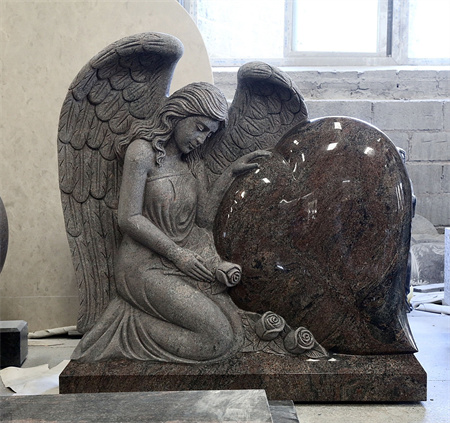The Role of Granite in Sustainable Cemetery Design

Granite has been a timeless symbol of strength and permanence, qualities that resonate deeply in the context of cemetery design. As the world shifts towards more sustainable practices in architecture and urban planning, cemeteries too are evolving. The role of granite in sustainable cemetery design may not immediately come to mind, but this durable stone offers a wealth of benefits that align perfectly with environmentally conscious burial practices.
In an age where sustainability is no longer optional, the materials used in cemetery construction and monument design must be carefully chosen. Granite, with its remarkable durability, low maintenance, and natural aesthetic appeal, stands out as a top choice for creating spaces that are both meaningful and environmentally responsible. The use of granite in cemeteries is not only about creating memorials that endure for generations; it’s about contributing to the long-term health of the landscape and reducing the environmental footprint of burial practices.
One of the key ways granite supports sustainability is through its longevity. Unlike other materials, granite withstands the harshest of weather conditions without deteriorating. A granite headstone, for example, can last centuries without significant degradation, which means fewer resources are needed over time to replace or repair monuments. In a world increasingly focused on reducing waste and conserving resources, this inherent durability makes granite a wise choice for cemetery design. The stone’s ability to endure means that cemeteries can maintain their beauty and integrity for much longer periods, reducing the need for replacements and preserving the landscape’s natural state.
Moreover, granite is a natural stone, which makes it a much more eco-friendly option compared to synthetic materials that might be used for memorials or markers. It is quarried directly from the earth, and when extracted responsibly, granite’s environmental impact is significantly lower than that of many other building materials. Unlike concrete or metals, which may involve toxic chemicals during their production processes, granite is a product of nature, free from harmful additives. This natural origin ensures that its use in cemetery design doesn’t contribute to harmful environmental effects over time.
Cemeteries are also often seen as public spaces where families can come together, reflect, and remember. The timeless beauty of granite adds to the serene atmosphere of these spaces. Its natural colors and textures blend seamlessly with the surrounding landscape, creating a peaceful, respectful environment. As cemeteries move towards more holistic, green designs, granite monuments contribute to a space that is both visually harmonious and ecologically responsible. The stone’s visual appeal, combined with its environmental benefits, helps transform cemeteries into sanctuaries that honor both the deceased and the earth.

Beyond the material itself, the sustainability of granite in cemetery design extends to its local sourcing. By choosing granite from nearby quarries, cemeteries can further reduce their carbon footprint by minimizing transportation costs and emissions associated with shipping large quantities of stone across long distances. This local sourcing of materials is a key aspect of creating a sustainable cemetery, as it supports the local economy and ensures that the stone is part of the region’s natural landscape.
In addition to its physical qualities, granite has a unique ability to embody the values of longevity and remembrance, making it a powerful symbol in the context of memorialization. Cemeteries are spaces of both reflection and renewal, and by incorporating granite, designers not only honor the past but contribute to a future where preservation and sustainability are integral to our daily lives.
Sustainable cemetery design is about more than simply reducing environmental impact; it’s about creating spaces that connect with the land, the people, and the legacy of those who have passed. Granite, with its beauty, durability, and minimal environmental footprint, is an ideal material for cemeteries that wish to embrace both the past and the future. In a world that increasingly values sustainability, the role of granite in cemetery design is as relevant as ever. Through thoughtful, intentional use, granite helps ensure that our cemeteries remain lasting, beautiful, and respectful of both nature and memory.